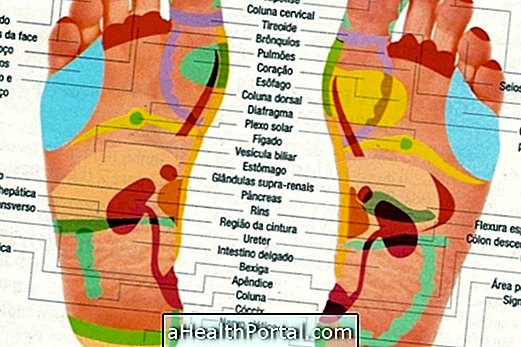Wegener's granulomatosis, also known as granulomatosis with polyangeitis, is a rare and progressive disease that causes inflammation of blood vessels in various parts of the body, causing symptoms such as congestion of the airways, shortness of breath, skin lesions, nose bleeds, ears, fever, general malaise, loss of appetite or eye irritation.
As it is a disease caused by autoimmune alterations, its treatment is mainly done with medications to regulate the system inume, such as corticosteroids and immunosuppressants, and although it has no cure, the disease is usually well controlled, allowing a life normal.
Wegener's granulomatosis is part of the group of diseases called vasculitis, characterized by inflammation and injury to blood vessels, which can cause damage to the functioning of various organs. Understand the types of vasculitis that exist and how to identify them.

Main symptoms
Some of the main symptoms caused by this disease include:
- Sinusitis and nose bleeds;
- Cough, chest pain and shortness of breath;
- Formation of ulcers in the mucosa of the nose, which can lead to a known deformity with a saddle nose;
- Inflammation in the ears;
- Conjunctivitis and other inflammations in the eyes;
- Fever and night sweats;
- Tiredness and fatigue;
- Loss of appetite and weight loss;
- Joint pain and swelling in joints;
- Presence of blood in the urine.
In rare cases, there may also be a compromised heart, leading to pericarditis or lesions in the coronary, or also the nervous system, leading to neurological symptoms.
In addition, patients with this disease have an increased tendency to develop thrombosis, and attention should be paid to symptoms that indicate this complication, such as swelling and redness in the limbs.
How to treat
Treatment of this disease includes the use of medicines that help control the immune system, such as Methylprednisolone, Prednisolone, Cyclophosphamide, Methotrexate, Rituximab or biological therapies.
The antibiotic sulfamethoxazole-trimethoprim may be associated with treatment as a way to reduce relapses of some forms of diseases.
How is the diagnosis made?
To diagnose Wegener's Granulomatosis, the doctor will evaluate the symptoms presented and the physical examination, which can give the first signs.
Then, to confirm the diagnosis, the main examination is a biopsy of the affected tissues, which demonstrates changes compatible with vasculitis or necrotizing granulomatous inflammation. Tests such as ANCA antibody dosing may also be required.
In addition, it is important for the physician to differentiate this disease from others who may have similar manifestations, such as lung cancer, lymphoma, cocaine use or lymphomatoid granulomatosis, for example.
What causes Wegener's granulomatosis
The exact causes that lead to the onset of this disease are not known, however, it is known to be related to changes in the immune response, which may be to the body's own components or external ones that penetrate the body.

























